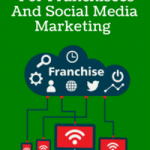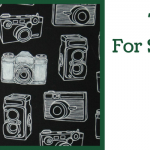Imagine this: you’re on a blind date. The person finally shows up and they’re attractive, but the first thing they say is “Hi. I make a decent living and am in good health. We should date.” You probably wouldn’t be looking forward to the next hour and a half, would you? And if they continued on like that, you’d probably be praying one of your friends called so you could fake an excuse to leave.
The above is a real-world comparison to what it looks like when brands put very little effort into their marketing strategy. A brand strategy without a gimmick to attract customers is plain old content marketing—it’s the equivalent of putting a product on the shelf unassembled and out of its packaging. The product is still good, but people are going to pass it by if you don’t put effort into the presentation. The presentation is called story-driven marketing.
Story-driven marketing is the hook that will get audiences to keep their eyes on your content. Without some kind of narrative, your online presence will amount to a series of boring, transparent product placements, and we both know that nobody wants to read that. You need to give your audience a reason to want what you’re selling, some kind of real-world applicable reason why they’ll benefit from interacting with your product.
Now, this does not mean that you need to turn your Twitter feed into a Dungeons and Dragons campaign or turn every post into a novel. There are simple, short, but effective ways to create a narrative around your brand that is enticing, not exhausting.
For example, let’s say you’re a mop company and your deal is that you have a series of mops with flexible, curved handles that make doing chores less of a strain on the back and shoulders. It’s not hard to come up with a scenario where this feature would be useful. Maybe you knew someone who lived on their own and had to do all their own housekeeping but the labor was putting a lot of strain on their back and, voila, you went out and secured the patent for your mop that day. This not only humanizes your brand, but also outlines a clear situation in which your mop is preferable to other mops on the market.
Doesn’t that approach sound a lot better than “Hello, we’re Mop X. We’re anti-back pain” and then a link?
Brands do not spring fully formed like Athena into existence; every brand has the elements of a story within it: the inciting incident, when you decided there was a need for your company; characters, the people who inspire you or helped your business come to be; and a climax, the moment your business finally went live.
A product is a product, no matter how innovative or useful it might be. The story behind your product or company is going to be what captures the audience’s attention and has them thinking “not only do I like it, but I like them.” If you don’t capitalize on the human elements of your brand, you’re making your customers fight an uphill battle to take interest in it.
Not everyone is a skilled writer or has the capability to craft a narrative around their brand or product. If you think your business could benefit from story-driven marketing but aren’t sure you’re the best person to implement it, give The Go! Agency a call. Our skilled creative team can tell the story of your product in a way that will turn your brand into a household name.











